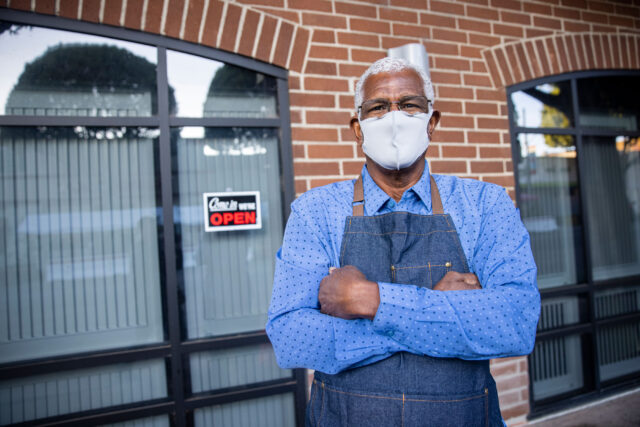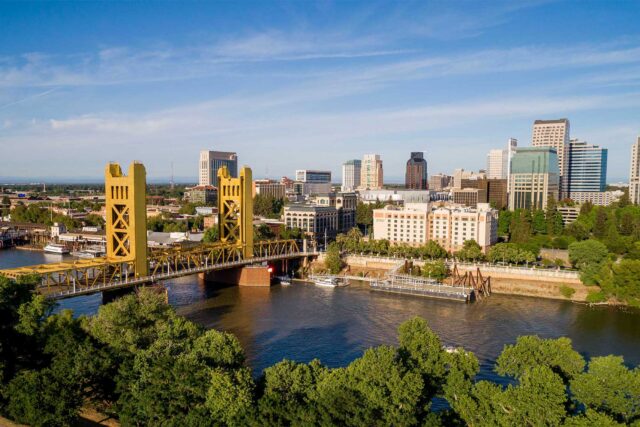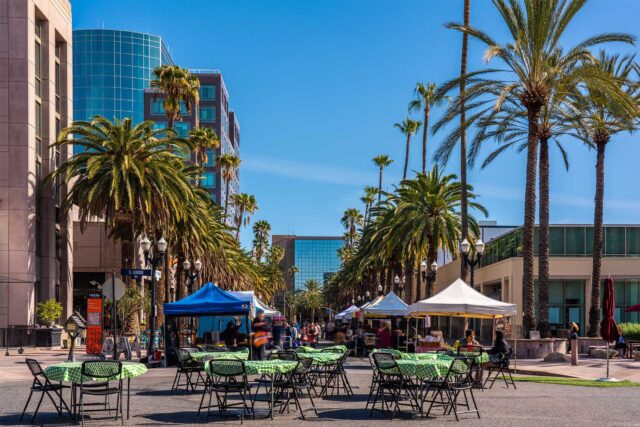This post is the first in a series analyzing how job sectors will affect economic recovery in five California regions.
Just over a year ago, COVID-19 shut down California’s economy, putting 3 million Californians out of work. The trajectory of the recession and the recovery, however, varies greatly across the state. The Los Angeles economy declined faster than in many other regions, driven by shocks to hardest-hit service sectors and the movie and film industry.
But so far LA has also bounced back quicker. As of March 2021, employment in Los Angeles has recovered 64% of losses during the first three months of the pandemic, compared to 59% statewide. However, unemployment is still 10.9%—much higher than the statewide 8.2%.
Early in the pandemic, Los Angeles employment fell 24%, the equivalent of 1.2 million jobs—or nearly two-fifths of all job loss in California from February to May 2020. Unemployment quadrupled, from 4.7% to 18.8%, the highest rate in the state aside from El Centro metro/Imperial County.
Some of LA’s challenges mirror other regions, where leisure and hospitality jobs—including arts and entertainment, accommodation, and food services—have seen the deepest cuts. For LA, 41% of job loss as of today comes from those sectors. Restaurants account for most of the decline, once supporting office workers and business travelers but now closed as remote work expanded and business travel dried up. Business districts across the state, especially in the Bay Area, face similar challenges. And while LA’s arts and entertainment employment was hit hard, it is faring slightly better than statewide.
Los Angeles is unique in its reliance on the movie and television industry, where employment is 33% lower today than one year ago. The industry is part of the “information” sector, which is down 23% in LA but only 10% statewide. In LA, 63% of information jobs are in motion picture and sound recording. When studios halted production, many actors, projectionists, audio and video techs, producers, and directors were out of work. In contrast, Bay Area information jobs skew toward internet and software services, often done remotely, and were largely unaffected (up 0.4%).
Finally, LA employment in “other services” remains further below last year’s levels than statewide (down 24.8% in LA vs. 20.3% statewide); these jobs include face-to-face services like laundry and salons as well as civic and political organizations. LA’s jobs in professional services and manufacturing also are down more than statewide.
A year after the pandemic, LA employment is rebounding, and unemployment has improved almost 50%. While the recovery seems to be accelerating, remote work and its impact on business districts as well as the return of the film industry will shape LA’s recovery. Where businesses have shuttered and office workers are now remote, as in downtown LA, recovery may take longer and have a different look. For other businesses, the need for workers may have shifted, potentially stalling job growth—restaurants may rely on a smaller wait staff or offices may have downsized.
To speed the rebound and support equity, policymakers can target development efforts to area businesses with the greatest losses, such as food service, hospitality, film, personal services, and tourism. Workers facing long-term unemployment may need near-term income support, aid for re-attaching to work, as well as investment in future jobs training. In LA, nine community colleges and many job training partners should be poised to meet the evolving needs of the workforce, which could aid recovery while improving opportunities for Angelenos.
Our next post explores the labor market challenges faced in the Central Valley and Central Coast regions.
Topics
California Community Colleges coronavirus COVID-19 Economy employment Health & Safety Net Higher Education jobs Los Angeles recession recovery regional employment recovery unemployment Workforce NeedsLearn More

A Regional Look at the Availability of Well-Paying Jobs after COVID

Bay Area Recovery May Lag without Onsite Tech Workers

California’s Evolving Economy

Farms, Freight, and Retail Support the Recovery in Central California

How Did California’s Economy Recover from COVID—and What Comes Next?

Making Sense of California’s Economy

The Sacramento Area Economy Runs on Government




